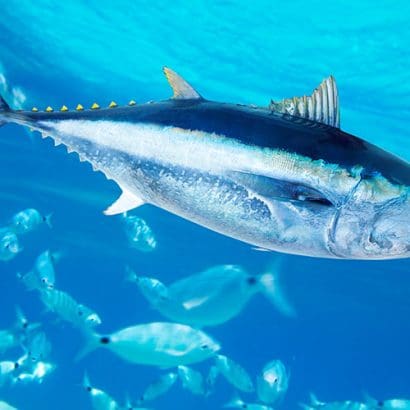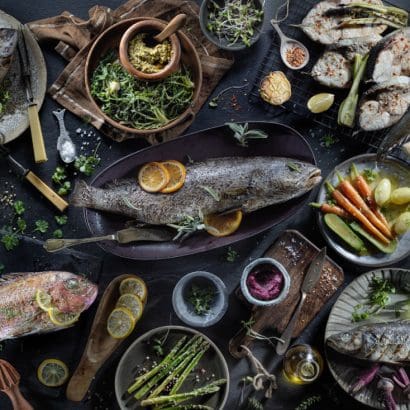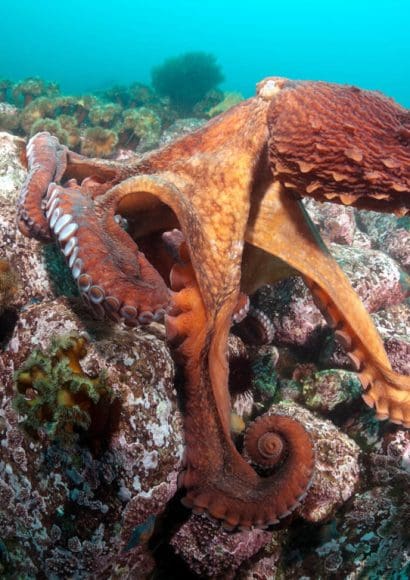
Octopuses are fascinating creatures of the marine world that have developed a series of survival strategies over millions of years. These strategies allow them to evade predators, hunt effectively, and adapt to different environments. In this article, we will explore the various techniques and skills that octopuses use to survive in their natural habitat.
Contents
Physical Adaptations for Survival.🐟
Camouflage and Mimicry.
One of the most impressive abilities of the octopus is its capacity to change color and texture to blend in with its surroundings. This allows them to: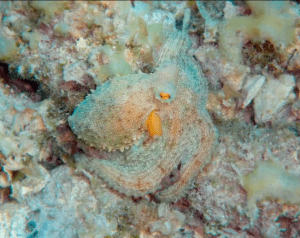
-
- Avoid Predators: Octopuses can blend in with rocks, algae, and corals to hide from predators such as sharks and other large fish.
- Hunt Effectively: They use camouflage to stalk their prey undetected, ensuring a successful attack.
Color Changes.
Octopuses have specialized cells called chromatophores that contain pigments and allow them to change color rapidly. Additionally, they have leucophores and iridophores that reflect light and aid in the camouflage process.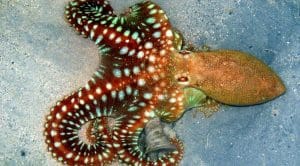
Skin Texture.
Not only can they change color, but they can also alter the texture of their skin to mimic rough or smooth surfaces, further enhancing their ability to hide.
Body Structure and Mobility.
Octopuses have soft and flexible bodies, allowing them to hide in small and hard-to-reach spaces. Their ability to move quickly through the water is also crucial for escaping threats.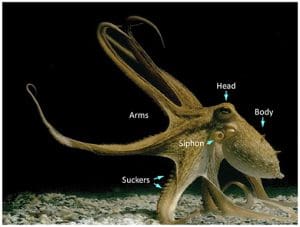
Multifunctional Tentacles.
Each of their eight tentacles is covered in suckers that allow them to grasp surfaces, manipulate objects, and detect chemicals in the water, useful for both feeding and defense.
Jet Propulsion.
Octopuses can expel water at high speed through their siphon to move quickly and escape predators.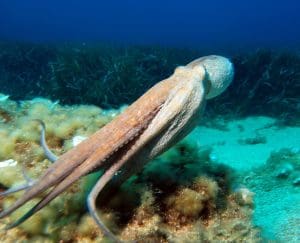
Feeding Strategies.🐟
Hunting Techniques.
Octopuses are nocturnal hunters that use a variety of strategies to capture their food. Their prey includes crabs, shrimp, and small fish.
Ambush.
They hide and wait for their prey to come close before quickly lunging at it.
Tentacle Wrapping.
They use their tentacles to wrap around and paralyze their prey before consuming it.
Use of Toxins.
Some species of octopus possess venom glands that they use to immobilize their prey. This venom can be potent enough to kill animals much larger than themselves.
Social and Reproductive Behaviors.🐟
Solitary but Interactive.
Although generally solitary, octopuses can exhibit complex social behaviors during mating and in areas with high population density.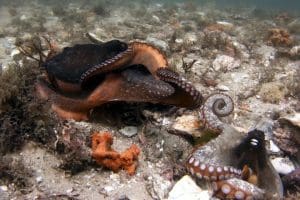
Courtship and Mating.
Courtship includes color changes and specific movements. Males use a modified tentacle, called a hectocotylus, to transfer sperm to the female.
Parental Care.
After laying eggs, the female octopus guards them until they hatch, protecting them from predators and ensuring they receive enough oxygen. During this time, the female does not eat and dies shortly after the eggs hatch.
Isolation and Biodiversity.
The isolation of marine habitats plays a crucial role in the biodiversity observed within octopus species. Isolated environments can lead to unique adaptations and evolutionary traits, contributing to the rich diversity seen in octopus populations around the world. Understanding these isolated ecosystems is essential for comprehending the broader patterns of biodiversity in marine life.
Defense Mechanisms.🐟
Ink Release.
When threatened, octopuses can expel a cloud of ink to confuse predators and escape.
Autotomy of Tentacles.
Like some lizards, octopuses can detach a tentacle if it is caught by a predator. The tentacle will continue to move, distracting the predator while the octopus escapes.
5 Recipes with Cachama Fish.
If you’re interested in exploring delicious and diverse ways to prepare seafood, check out our article on “5 Recipes with Cachama Fish.” You’ll find easy-to-follow recipes that bring out the best flavors of this versatile fish, perfect for any meal.
Adaptability to Different Environments.🐟
Habitat Diversity.
Octopuses can live in a variety of marine environments, from coral reefs to the deep ocean. This adaptability is key to their survival.
Learning and Memory.
Octopuses are extremely intelligent and have excellent memories. They can learn to solve problems and remember solutions, which helps them adapt to changes in their environment and avoid dangers.
Frequently Asked Questions about Octopuses.🐟
To delve even deeper into the fascinating world of octopuses, let’s answer some of the most common questions people have about these incredible creatures. Below, we explore their defense mechanisms, dietary habits, and longevity in captivity.
How do octopuses defend themselves from predators?
Octopuses have several defense strategies against predators. One of the most notable is their ability to expel a cloud of ink, which serves to disorient and confuse the attacker while the octopus makes its escape. Additionally, they can camouflage by changing the color and texture of their skin to blend in with their surroundings. If necessary, they can also detach one of their tentacles, which will continue to move to distract the predator while the octopus flees.
What do octopuses eat in their natural habitat?
In their natural habitat, octopuses are carnivores, and their diet consists mainly of crustaceans such as crabs and shrimp, mollusks such as clams and snails, and small fish. They use their tentacles and suckers to catch and manipulate their prey, and in some cases, they employ their venom to immobilize it before consumption.
How long can octopuses live in captivity?
The lifespan of octopuses in captivity varies by species. Generally, they can live between 1 and 3 years, although some smaller species may have shorter lives. Factors such as water quality, diet, and the absence of predators can positively influence their longevity in captivity, allowing some octopuses to reach the upper end of their expected lifespan.

